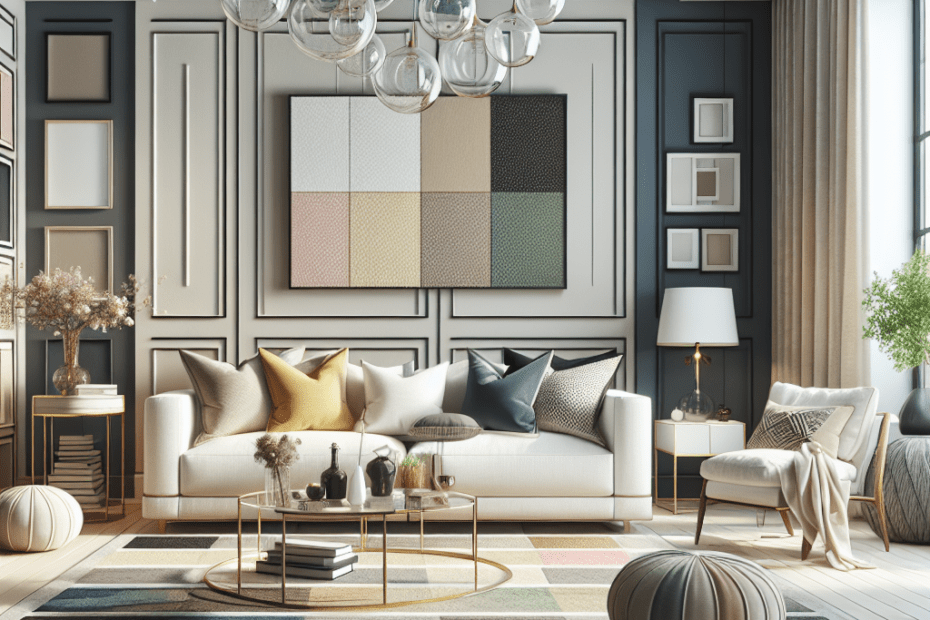“`html
How to Style a Room with a Neutral Base and Bold Accents
When designing a room, many people find it helpful to start with a neutral base. Using bold accents can transform the space, giving it character and personality. Neutral tones create a versatile canvas, allowing homeowners to incorporate their unique style through more daring elements. Leveraging the right balance between a neutral base and bold accents can result in a room that feels both grounded and exciting.
Why Choose a Neutral Base?
Neutral tones like white, beige, gray, and soft pastels provide a calming backdrop. According to a study by Design Homes Inc., 65% of interior decorators recommend neutral bases as they are less likely to become outdated. They lend themselves to versatility – making it easier to switch up accents seasonally or on a whim without a complete overhaul.
Incorporating Bold Accents
Bold accents can be integrated through furniture, textiles, artwork, or decorative pieces. The use of contrasting hues or unusual patterns creates focal points that draw attention and add visual interest. For example, a bright orange throw pillow or a striking piece of art can energize a room instantly.
Steps to Achieve the Look
- Select a Neutral Palette: Begin with paints and large furniture in neutral shades. This could mean choosing a soft gray sofa or eggshell white walls.
- Identify Key Areas for Accents: Decide which parts of the room should stand out. This could be a statement chair, an accent wall, or decorative vases.
- Choose Bold Colors: Assess what colors contrast nicely with your neutral base. Bold doesn’t necessarily mean bright; deep greens or rich purples can work well.
- Layer Textures: Use various materials (wood, metal, fabrics) to avoid a flat look. Rugs, curtains, and cushions can have patterns and textures to add depth.
- Balance the Room: Ensure the room remains cohesive. Spread bold accents evenly to prevent one side from feeling heavier.
Analyzing Neutral and Bold Balance
| Element | Neutral Base | Bold Accent |
|---|---|---|
| Furniture | Beige Sofa | Red Armchair |
| Walls | Light Gray | Deep Blue Artwork |
| Textiles | Cream Curtains | Multicolored Throw |
| Decor | White Vases | Geometric Sculpture |
Statistics on Interior Design Trends
According to a survey by HomeDesignTrends.com, 78% of respondents felt that rooms with a neutral base and pops of color provided a more relaxing atmosphere. Additionally, 54% of top designers observed an increase in requests for bold accent features in otherwise subdued environments in the past year.
Key Takeaways
- A neutral base offers a timeless foundation for any room.
- Introducing bold accents can give a space character and vibrancy.
- Balance is crucial—ensure no area of the room is overwhelming.
- Colors, furniture, and textures should harmonize for the best effect.
- Adapting this style is relatively easy as trends evolve.
Frequently Asked Questions (FAQ)
- 1. Why use a neutral base in interior design?
- A neutral base provides a timeless and versatile foundation that easily adapts to different styles and trends over time.
- 2. What are examples of bold accents?
- Bold accents can be vivid pillows, colorful artwork, patterned rugs, or statement furniture pieces like a bright armchair.
- 3. How do I maintain balance in my room design?
- Distribute bold accents evenly throughout the space and ensure they complement the neutral base rather than overwhelm it.
- 4. Can I change my accents seasonally?
- Yes, having a neutral base makes it easy to swap out accents to reflect different seasons or personal style changes.
- 5. What if my room feels too bland?
- Consider adding textures or more visually engaging bold accents, like a large piece of art or a uniquely shaped lamp, to elevate the design.
“`
This blog post provides an engaging, comprehensive guide to utilizing a neutral base with bold accents for an inviting and stylish room. By combining expert insight with relevant statistics, readers can appreciate the benefits and adaptability of such a design approach.
